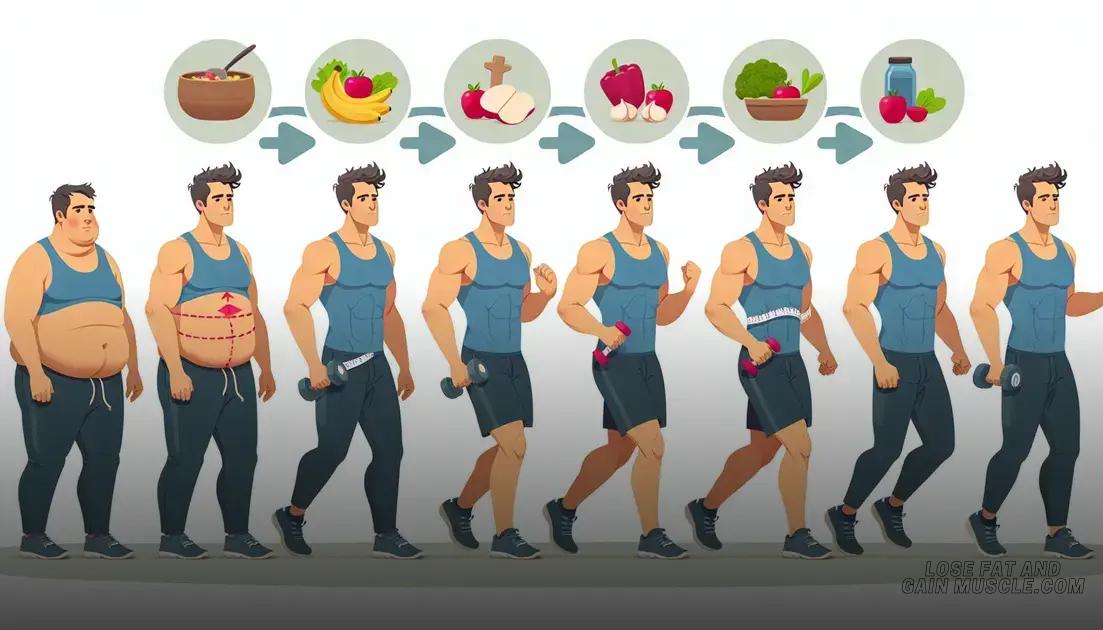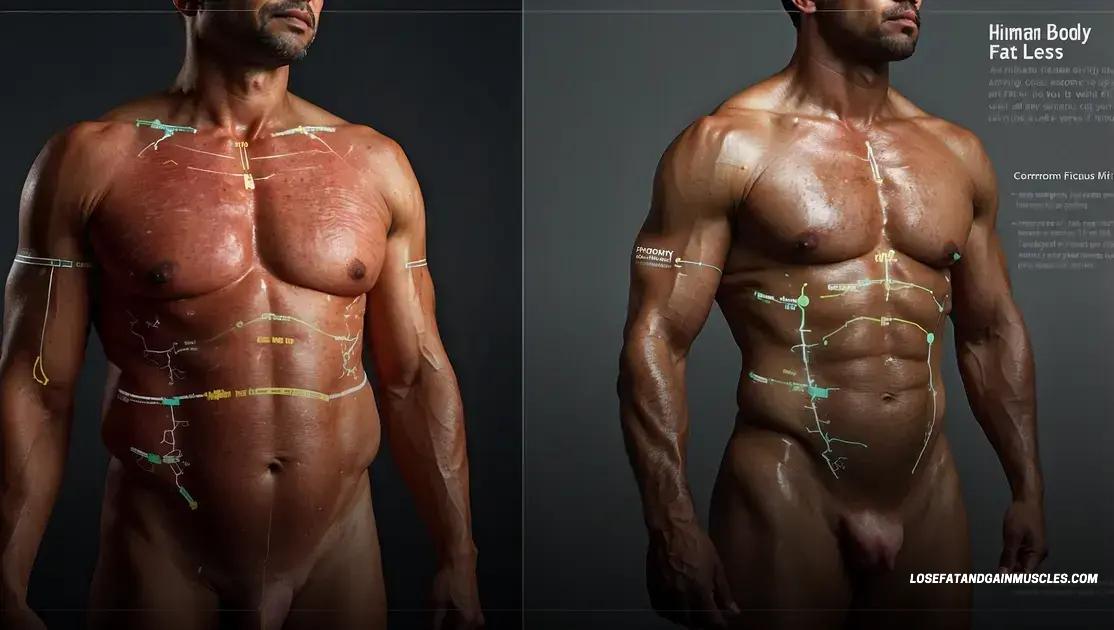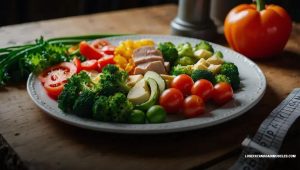How Fast Does Fat Turn into Muscle? Discover the Truth Behind Transformation
Fat does not turn into muscle; they are distinct tissues. To transform your body, focus on a balanced diet, regular exercise, and realistic timelines. With dedication, you can effectively lose fat while gaining muscle over time.
How fast does fat turn into muscle? Many people wonder about the relationship between fat loss and muscle gain. It’s crucial to distinguish between these two processes, as fat does not simply convert into muscle. Instead, losing fat and building muscle are separate physiological events. In this article, we will examine the science behind these transformations and explore nutrition and exercise’s roles.
Understanding Muscle and Fat
When discussing fitness, it’s important to understand the difference between muscle and fat. Muscle is a dense tissue that plays a crucial role in movement, structure, and metabolism. It burns more calories than fat, making it essential for weight management. Fat, on the other hand, serves as an energy reserve and protects our organs. However, excess fat can lead to health issues.
Composition of Muscle and Fat
Muscle is composed primarily of water, proteins, and other substances. It can adapt and grow through physical training. Fat, mostly made up of triglycerides, serves as insulation and an energy source. Understanding these differences is vital for those looking to lose weight and gain muscle.
The Role of Fat in the Body
Fat has a role beyond energy storage. It helps in the absorption of certain vitamins and is necessary for hormone production. A balanced level of fat is essential for good health.
The Importance of Muscle
Building muscle not only improves physical appearance but also enhances bone density, strength, and overall health. Resistance training stimulates muscle production, which contributes to fat loss and improves overall body composition.
Complex Relationship Between Muscle and Fat
While many aim to replace fat with muscle, it’s essential to realize this involves different processes. Losing fat and gaining muscle can occur simultaneously, but one does not convert into the other. Instead, a caloric deficit is required to lose fat, while appropriate strength training is needed to build muscle.
Understanding Body Composition
Monitoring body composition is vital for your fitness journey. It involves looking at the ratios of fat to muscle in your body, rather than just focusing on weight. By improving body composition, you enhance overall health and athletic performance.
Conclusion
Understanding muscle and fat helps in setting realistic fitness goals. Knowing how to build muscle while losing fat is essential for a healthy lifestyle.
The Myths of Fat Converting to Muscle
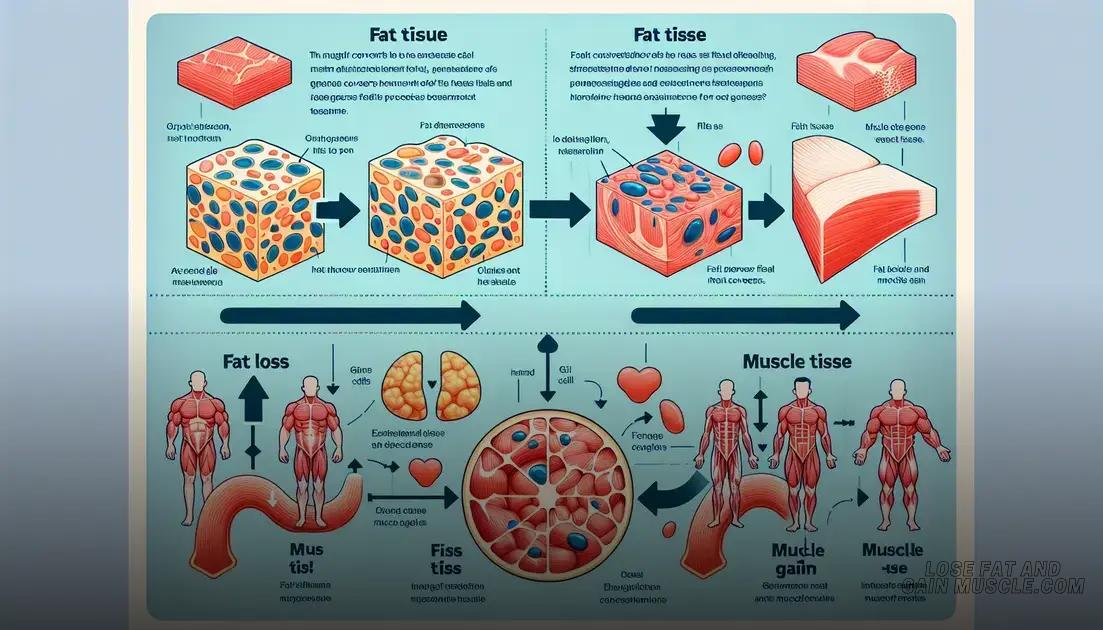
Many people believe in the common myth that fat can convert directly into muscle. This idea likely arises from the desire to see quick transformation in body composition. However, this is a misunderstanding of how our bodies work. Fat and muscle are two different types of tissues that serve distinct purposes in the body.
Understanding the Conversion Myth
The reality is that fat does not turn into muscle. When you lose fat, you are burning stored energy, while building muscle involves strength training and adequate nutrition to support muscle growth.
Why This Myth Persists
This myth can persist because people notice weight loss and increased muscle definition simultaneously. This often leads to confusion. While you may decrease fat and gain muscle at the same time, one is not turning into the other.
Body Transformation Explained
To achieve a positive body transformation, you must work on both aspects: reduction of body fat through a caloric deficit and muscle building through proper exercises. Combining a healthy diet with resistance training is key to achieving your fitness goals.
Common Misconceptions
Another misconception is that simply doing more cardio will lead to muscle growth. While cardio is essential for cardiovascular health and helps with fat loss, it does not contribute significantly to muscle building. Strength training is necessary for that.
Seeking Valid Information
To separate fact from fiction, it’s essential to rely on science and credible sources. Understanding the physiological processes at play can help you navigate fitness myths and pursue effective strategies for your health.
The Importance of Education
Being informed about the truth behind fat and muscle helps set realistic fitness goals. Instead of waiting for a magic transformation, focus on regular workouts and a balanced diet to achieve lasting results.
Scientific Insights into Muscle Gain
To understand muscle gain, we need to look at the science behind how muscles grow. The process of building muscle is known as hypertrophy. This occurs when muscle fibers sustain damage, often from resistance training, which triggers a healing response. During recovery, the body repairs the damaged fibers, making them bigger and stronger.
The Role of Protein Synthesis
Muscle gain is influenced by protein synthesis, which is the process where cells build proteins. A positive balance between protein synthesis and breakdown leads to muscle growth. Consuming enough protein through your diet supports this process.
Importance of Resistance Training
Resistance training is key to muscle development. Lifting weights creates microtears in muscle fibers, which signals the body to repair and grow stronger. Different training styles, like strength training and high-intensity workouts, can effectively promote muscle hypertrophy.
Understanding Recovery
Recovery is essential for muscle growth. After a workout, muscles need around 24 to 48 hours to recover. During this time, it’s important to have adequate rest and nutrition to allow for growth.
Hormonal Influence
Hormones play a significant role in muscle gain. For instance, testosterone and human growth hormone (HGH) are crucial for building muscle. Engaging in intense, compound exercises can enhance your hormonal responses, contributing to better muscle growth.
Nutrition’s Role in Muscle Building
Nutrition is vital for supporting muscle gain. A diet rich in whole foods, including lean proteins, healthy fats, and complex carbohydrates, fuels workouts and aids recovery. Proper nutrition helps provide the energy needed for resistance training and recovery phases.
The Science of Consistency
Consistency in training and nutrition is crucial for muscle gain. Regular workouts that challenge your muscles, combined with a balanced diet, lead to the best results over time. Aim for progressive overload, gradually increasing weights or resistance to continue seeing progress.
Nutrition’s Role in Muscle Development
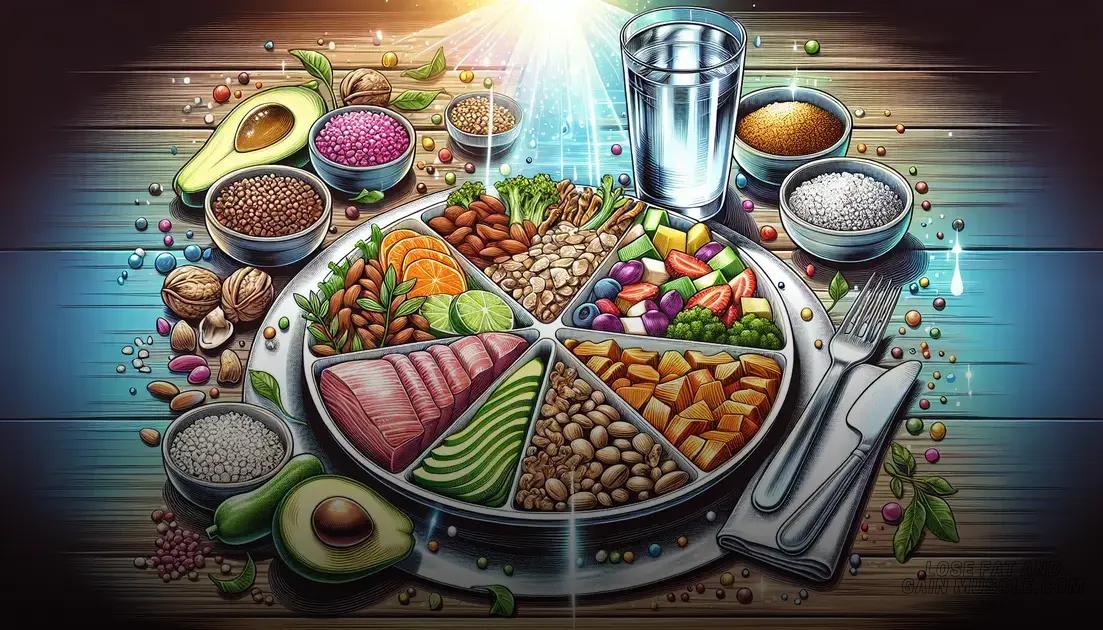
Nutrition plays a vital role in muscle development. The foods we eat provide the building blocks necessary for muscle growth and recovery. Consuming the right nutrients is important for those seeking to increase their strength and muscle mass.
Macronutrients and Muscle Growth
There are three primary macronutrients: proteins, carbohydrates, and fats. Each contributes to muscle development in different ways.
Protein: The Building Block
Protein is crucial for muscle repair. After workouts, muscle fibers need amino acids to rebuild. Aim to include high-quality protein sources, such as lean meats, fish, eggs, dairy, legumes, and nuts, in your diet.
Carbohydrates: Fuel for Workouts
Carbohydrates provide the energy needed for exercise. When you work out, your body primarily uses glucose for fuel. Including whole grains, fruits, and vegetables in your diet helps maintain energy levels during training.
Healthy Fats: Support Hormone Production
Healthy fats also play a vital role. They support hormone production, including hormones that help build muscle. Incorporate sources like avocados, olive oil, nuts, and fatty fish into your meals.
Timing Is Key
When you eat can also impact muscle development. Consuming a meal or snack with protein and carbohydrates shortly after a workout can help enhance recovery and promote muscle growth.
Hydration Matters
Staying hydrated is essential for overall health and supports muscle function. Dehydration can lead to decreased performance and hinder recovery. Make sure to drink plenty of water throughout the day.
Individual Needs
Everyone’s nutritional needs are different. Factors such as age, weight, activity level, and fitness goals can impact how much of each macronutrient you require. It may be helpful to consult a nutritionist or dietitian to create a personalized plan.
Exercise Impact on Body Composition
Exercise plays a crucial role in shaping body composition. Body composition refers to the ratio of fat to lean mass in your body. Understanding how exercise impacts this balance can help you achieve your fitness goals more effectively.
Types of Exercise
There are two main types of exercise: aerobic and strength training. Each contributes differently to body composition. Aerobic exercise, like running or cycling, helps burn calories and can reduce fat. Strength training, such as weightlifting, promotes muscle growth, which can increase overall metabolism.
How Exercise Burns Fat
When you exercise, your body uses stored fat as energy. This can lead to a decrease in fat mass over time. A combination of aerobic and strength training is often the most effective way to lose fat while preserving muscle mass.
Muscle Mass and Metabolism
Increasing muscle mass through strength training can boost your resting metabolic rate. This means you will burn more calories even when at rest. More muscle mass translates into a better body composition, as it reduces body fat percentage.
The Role of Consistency
Consistency is key when it comes to exercise and body composition. Regular workouts contribute significantly to long-term changes. Aim for a balanced routine that includes both cardio and strength training at least three times a week.
Combining Exercise with Nutrition
While exercise is essential, it should be combined with proper nutrition for optimal body composition. Eating a balanced diet that includes adequate proteins, healthy fats, and carbohydrates supports both muscle gain and fat loss.
Setting Realistic Goals
It’s important to set realistic fitness goals. Changes in body composition take time and dedication. Track your progress not just by weight, but through body measurements and how you feel during workouts.
Realistic Timelines for Transformation
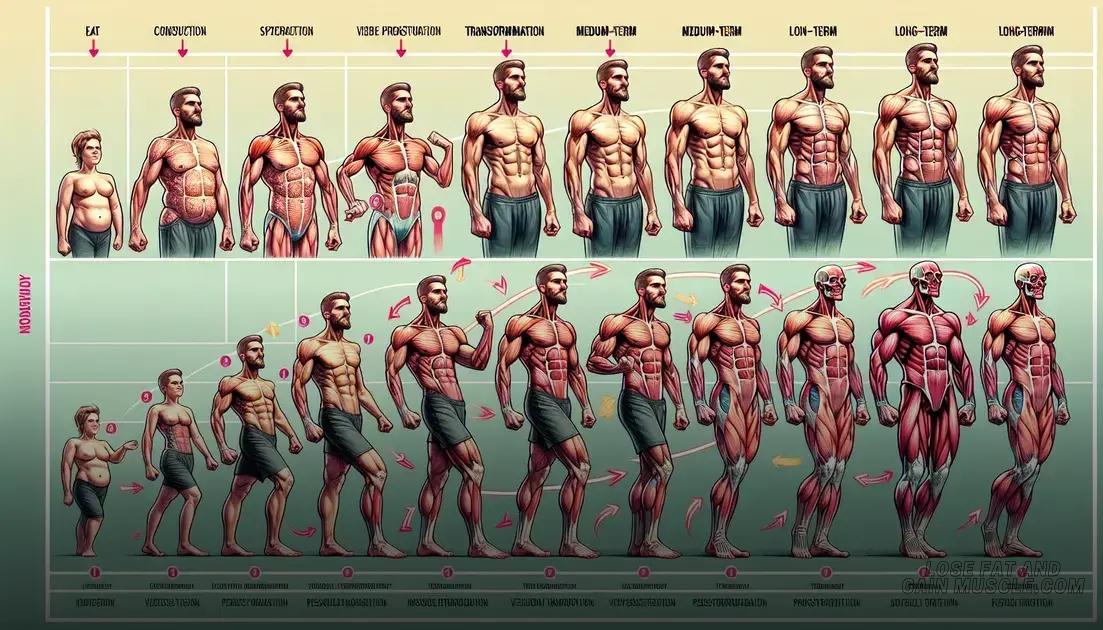
When it comes to achieving fitness goals, having realistic timelines is essential. Transformation takes time and commitment. Knowing what to expect can help keep you motivated along the way.
Initial Changes
Most people begin to notice initial changes in their body within the first few weeks of consistent exercise and proper nutrition. This may include losing water weight and feeling more energetic. However, visible changes in fat loss or muscle gain may take longer.
Short-Term Goals
In the first one to three months, you might see some fat loss. Aiming for losing about 1 to 2 pounds per week is a realistic goal. Along with fat loss, you may experience increased strength and endurance.
Medium-Term Expectations
After three to six months of consistent training, more noticeable changes in body composition can occur. You can expect to see improvements in muscle definition and reductions in body fat percentage.
Long-Term Transformations
Real transformations can be witnessed in six months to a year. At this stage, both fat loss and muscle gain can be significant. Building sustainable habits is key, as long-term changes require dedication to both exercise and nutrition.
Factors Influencing Timelines
Everyone’s body responds differently to exercise and nutrition. Factors such as age, gender, genetics, and starting fitness level can affect how quickly you see results. It’s important to be patient and adapt your expectations based on your progress.
Mindset Matters
Staying positive and focused on your goals can enhance motivation. Tracking your progress through measurements or photos can help visualize your transformation, even when the scale doesn’t show the results you expect.
Wrapping Up on Muscle and Fat Transformation
Understanding how fat and muscle transform in the body is crucial for anyone embarking on a fitness journey. From demystifying the conversion myths to realizing the importance of nutrition and exercise, every aspect plays a vital role in achieving your goals.
Through consistent exercise, balanced nutrition, and realistic timelines, you can effectively manage your body composition. Remember that body transformation takes time and patience, so celebrate your progress along the way.
With the right mindset and dedication, you can successfully navigate your path to health and fitness, ultimately leading to a stronger and fitter version of yourself.
FAQ – Frequently Asked Questions about Muscle and Fat Transformation
How fast does fat turn into muscle?
Fat does not convert directly into muscle. They are different tissues, and while both can change, fat loss and muscle gain are separate processes.
What should my nutrition look like for muscle development?
A diet rich in protein, healthy fats, and complex carbohydrates is essential. Focus on lean meats, fruits, vegetables, and whole grains to support muscle growth.
How often should I exercise to see results?
Aim for a balanced routine with both cardio and strength training at least three times a week for optimal results in body composition.
What are realistic timelines for seeing changes in body composition?
Initial changes may be seen in a few weeks, with more noticeable results typically occurring within three to six months, and significant transformations possible in six months to a year.
Does hydration affect muscle growth?
Yes, staying hydrated is vital for muscle function and recovery. Dehydration can hinder performance and slow down progress.
Can I build muscle while losing fat?
Yes, it is possible to lose fat and gain muscle simultaneously, but it requires a focused approach to both nutrition and exercise.
